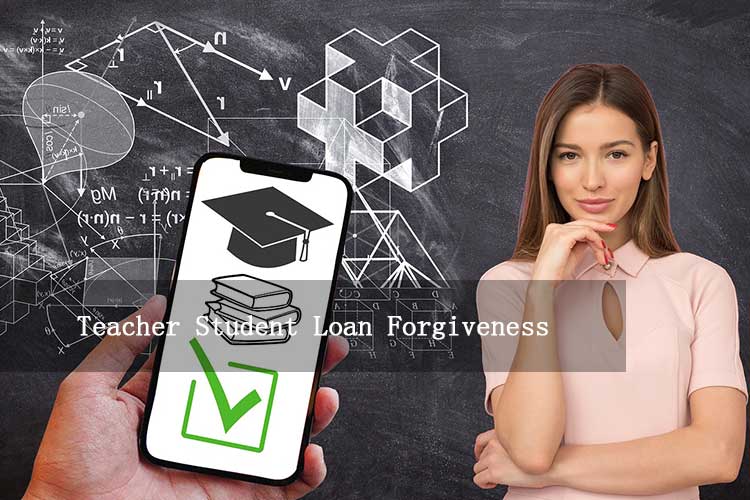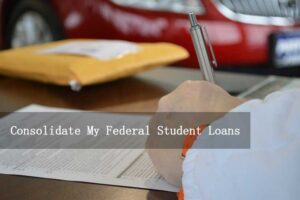
For educators committed to shaping the minds of future generations, the weight of student loan debt can feel quite heavy. Thankfully, there are various student loan forgiveness programs aimed at helping eligible teachers lighten this load. Whether you’re just starting your teaching career or have years of experience, knowing how to benefit from these programs is essential for managing your debt. In this guide, we’ll provide you with all the information you need about teacher student loan forgiveness, covering eligibility criteria, available programs, and the application process.
What Is Teacher Student Loan Forgiveness?
Teacher student loan forgiveness includes various federal and state initiatives designed to assist educators in lowering or completely wiping out their student loan debt in return for a certain number of years working in designated schools or educational positions. The goal of these programs is to acknowledge and reward teachers for their dedication, particularly in areas that are underserved or in subjects that are in high demand.
Types of Loan Forgiveness Programs for Teachers
There are several forgiveness programs available for teachers, each with its own set of requirements and benefits. Below are the major programs educators can explore.
1. Teacher Loan Forgiveness Program
The Teacher Loan Forgiveness Program offers partial loan forgiveness for teachers who work in low-income schools or educational service agencies. Teachers may qualify for forgiveness of up to $17,500 depending on their subject area and grade level.
- Eligibility: Teachers must be employed full-time for five consecutive academic years in a qualifying low-income school. Elementary and secondary school teachers are eligible.
- Forgiveness Amount: Teachers who teach in high-need subject areas, such as mathematics, science, or special education, can receive up to $17,500 in forgiveness. Teachers in other subjects may qualify for up to $5,000 in loan forgiveness.
- Qualifying Loans: Only Direct Loans and Federal Family Education Loans (FFEL) are eligible for this program. Private loans are not included.
2. Public Service Loan Forgiveness (PSLF)
For educators who work in public service, the Public Service Loan Forgiveness (PSLF) program is one of the most beneficial options. It forgives the remaining balance of a teacher’s student loans after 120 qualifying monthly payments under an eligible repayment plan.
- Eligibility: Full-time teachers working for government or non-profit organizations (including public schools) qualify. The program requires that you make 120 qualifying payments under an income-driven repayment plan while employed in public service.
- Forgiveness Amount: There is no cap on the amount of debt that can be forgiven under PSLF. After 10 years (120 payments), your remaining balance is forgiven.
- Qualifying Loans: Only Direct Loans are eligible for PSLF. FFEL and Perkins Loans must be consolidated into a Direct Loan to qualify.
3. Perkins Loan Cancellation for Teachers
For teachers who have Perkins Loans, the Perkins Loan Cancellation program offers significant benefits. Teachers in certain low-income schools or high-need subject areas can have up to 100% of their Perkins Loans forgiven over five years.
- Eligibility: Teachers must work full-time in a low-income school or teach in a subject area where there is a shortage of qualified teachers, such as math, science, bilingual education, or special education.
- Forgiveness Amount: The cancellation is incremental, with 15% of the loan forgiven each year for the first and second years, 20% for the third and fourth years, and the remaining 30% in the fifth year.
Eligibility Requirements for Teacher Loan Forgiveness Programs
While each loan forgiveness program has its own set of requirements, some general eligibility criteria apply across most programs:
- Employment Type: You must work full-time as a teacher. Part-time work generally does not qualify.
- Service in Qualifying Schools: Many programs require service in a low-income or Title I school. The U.S. Department of Education maintains a database of qualifying schools, which can help you determine if your school is eligible.
- Years of Service: Most programs require a minimum number of years of service—usually between 5 and 10 years.
- Loan Status: Your loans must be in good standing. Defaulted loans may disqualify you from forgiveness, but there are options to rehabilitate defaulted loans if necessary.
How to Apply for Teacher Loan Forgiveness
Applying for teacher student loan forgiveness involves several steps, and each program has its own application process. Below is a general overview of how to apply:
- Check Your Eligibility: Before applying, ensure you meet the eligibility criteria for the forgiveness program you are interested in. This may include working at a qualifying school for a specified period of time.
- Submit the Necessary Documentation: Each program will require specific forms and documentation. For example, the PSLF program requires submission of the Employment Certification Form annually or when you change jobs. The Teacher Loan Forgiveness Program requires certification from your school or educational service agency.
- Track Your Payments: For PSLF, it’s crucial to track your 120 qualifying payments. Make sure these payments are made under an eligible repayment plan, such as an income-driven plan.
- Submit the Application: After meeting all eligibility requirements, submit the appropriate application form to your loan servicer. You can find application forms on the Federal Student Aid website or from your loan servicer.
- Wait for Approval: Processing your application can take several months, so be patient. Stay in contact with your loan servicer to ensure that your application is moving forward.
Maximizing Loan Forgiveness: Tips for Teachers
- Stay in a Qualifying Role: Many programs require that you remain employed in a qualifying school or role throughout the entire forgiveness period. Changing schools or roles may affect your eligibility.
- Submit Documentation Regularly: For PSLF, submitting the Employment Certification Form yearly helps ensure that your employment qualifies and tracks your progress toward forgiveness.
- Explore Multiple Programs: Teachers may qualify for more than one forgiveness program. For example, you can apply for Teacher Loan Forgiveness after five years, then switch to PSLF for the remainder of your loan balance.
What If You Don’t Qualify?
If you find that you don’t qualify for forgiveness under one of the major programs, don’t worry—there are still options:
- Income-Driven Repayment Plans: Federal loan borrowers can apply for income-driven repayment plans, which cap monthly payments at a percentage of your discretionary income and extend the repayment term. After 20 to 25 years of payments, any remaining balance may be forgiven.
- Loan Refinancing: For those with private student loans, refinancing can lower your interest rate or reduce your monthly payment, though it’s important to weigh the pros and cons carefully.
State-Specific Teacher Loan Forgiveness Programs
Many states offer their own teacher loan forgiveness or repayment assistance programs in addition to the federal programs. These state programs often focus on high-need areas such as rural schools, special education, or STEM fields. Be sure to check with your state’s department of education to see if you qualify for any state-specific programs.
Conclusion
Teacher student loan forgiveness offers a great opportunity to lessen or even wipe out student debt. By familiarizing yourself with the available options, ensuring you meet the eligibility criteria, and being proactive during the application process, you can greatly ease your financial strain. With various federal programs like PSLF and state-specific incentives, educators have several paths to alleviate their student loan debt while continuing their essential contributions to education.



